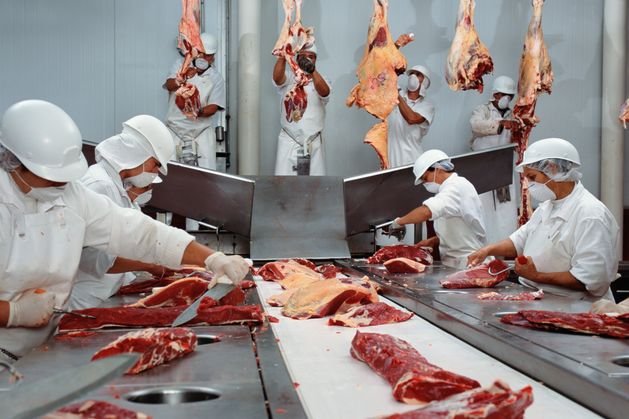AI to Get More Meat Off the Bone as US Herd Slumps to Historic Low

This AI-driven transformation reflects a response to a dilemma that ranchers and processors across America are grappling with—maximizing output in the face of dwindling resources. The US cattle herd has seen a steep decline, attributed to years of drought and rising feed costs. This decrease has sent ripples through the supply chain, elevating beef prices and prompting companies to seek technological interventions.
The Data Behind The Decline
According to the United States Department of Agriculture (USDA), the national cattle herd has shrunk to its smallest size since 1952. Drought conditions, especially pervasive in key cattle states like Texas and Oklahoma, have exacerbated the reduction, compelling ranchers to cull herds and sell off animals prematurely.
| Year | Herd Size (in millions) |
|---|---|
| 2020 | 94.4 |
| 2021 | 93.2 |
| 2023 | 89.3 |
This decline has led to increased operational pressures on meat processing plants to do more with less. Enter AI—a promising tool to enhance efficiency and output, potentially offsetting the reduced supply by optimizing the entire processing chain.
AI: The New Frontier in Meat Processing
Cargill Inc, a leader in global agri-business, is at the forefront of integrating AI into their operations to streamline processes and increase yield. By utilizing advanced algorithms, these systems can analyze and optimize cuts of beef with a precision that human workers cannot match.
As TechCrunch reports, AI algorithms in meat processing plants can adapt in real-time to variables like carcass size and meat quality, ensuring that each piece of meat extracted is maximized for consumer-ready products. This technological intervention not only enhances yield but also reduces waste—a critical goal in a resource-constrained environment.
Industry Perspectives and Future Implications
The move towards AI in meat processing has garnered support and scrutiny alike. Proponents, according to The Verge, argue that AI’s ability to reduce dependencies on human labor and boost efficiency is essential for the industry’s survival amid ongoing challenges. Conversely, skeptics voice concerns over job displacement and ethical considerations surrounding AI’s role in agriculture.
Nevertheless, the consensus among experts is that AI is poised to disrupt traditional methodologies, promising higher yields and reduced environmental footprints. According to industry analysts, AI’s role in the agri-sector could expand beyond processing, influencing everything from livestock management to predictive analytics in agriculture.
Conclusion: Embracing AI for a Sustainable Future
In an era where sustainability and efficiency are paramount, the adoption of AI in meat processing represents a pivotal step forward. For technology enthusiasts and industry stakeholders, the message is clear: embrace the potential of AI to transform and sustain vital industries in the face of adversity.
As the cattle herd continues to shrink, the role of AI in optimizing meat yield becomes ever more critical. For those in the tech industry, the challenge and opportunity lie in harnessing AI’s power to not only meet current demands but to pioneer innovations for a sustainable future.




